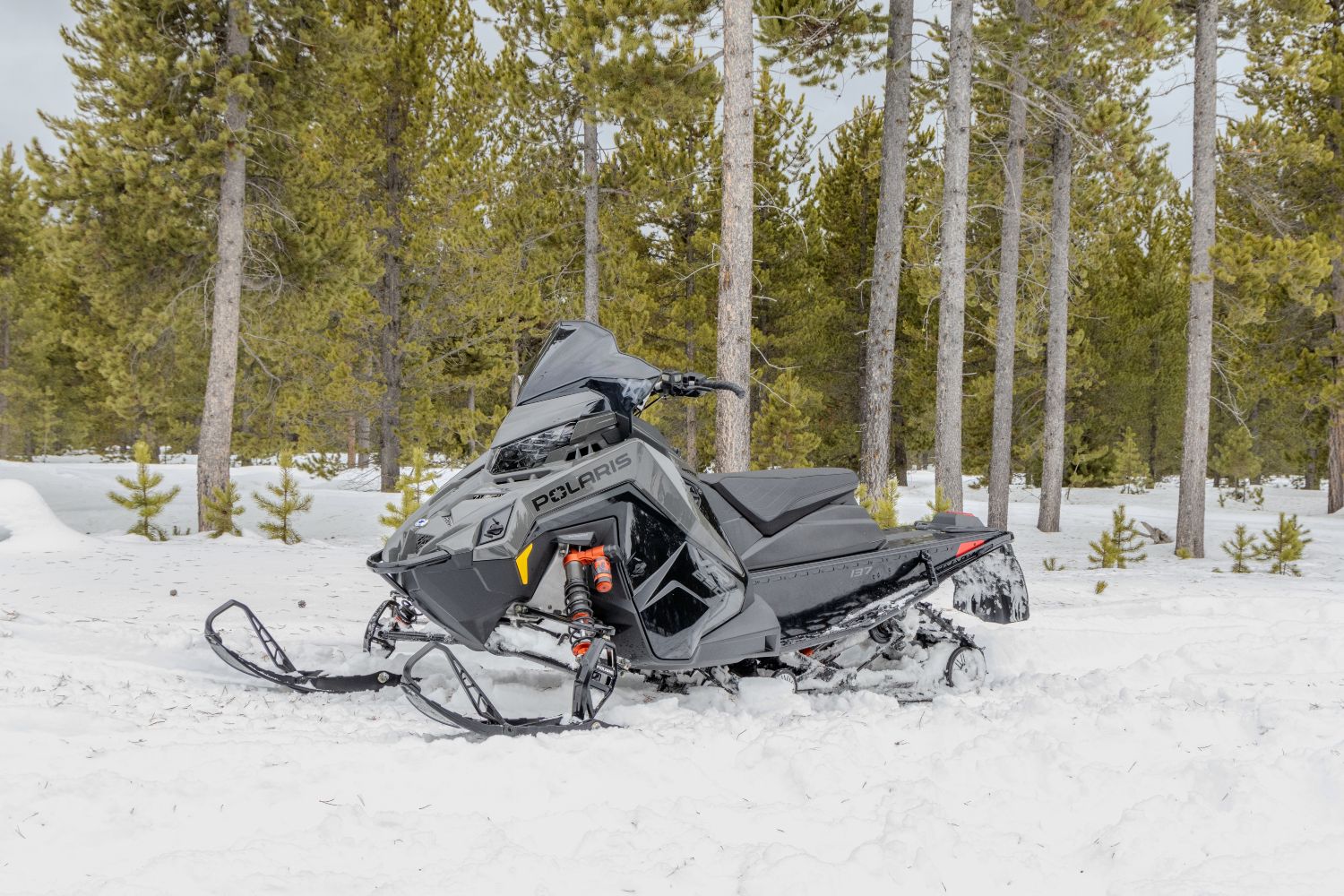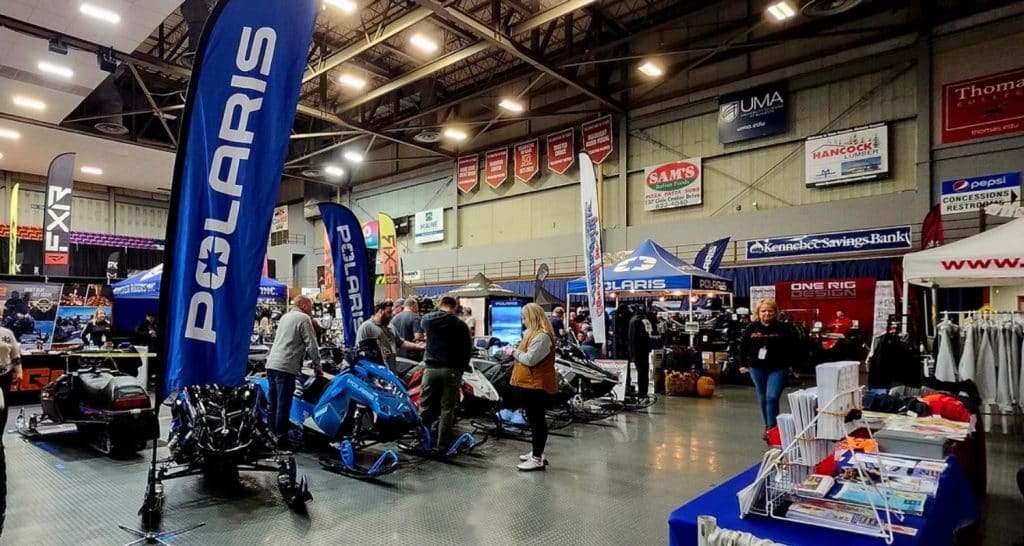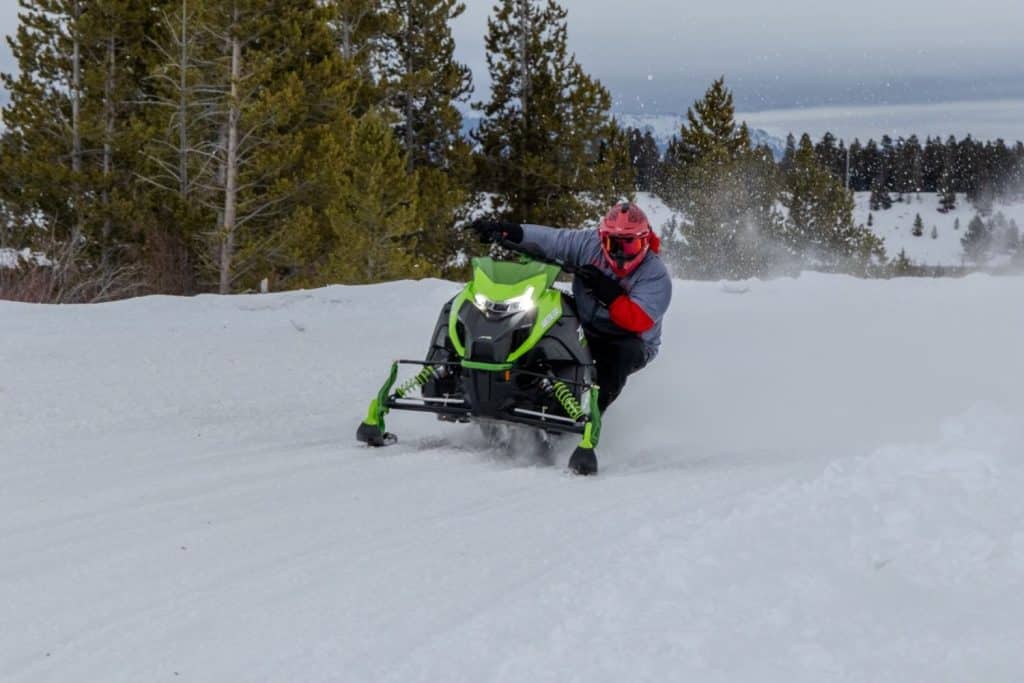The arrival of the new Polaris suspension has been eagerly awaited for several seasons. Arriving in 2025, this new suspension marks the era of electronics in trail models.
Following the same direction as off-road UTV, this new suspension is unsurprisingly called Dynamix.
Dynamix suspension
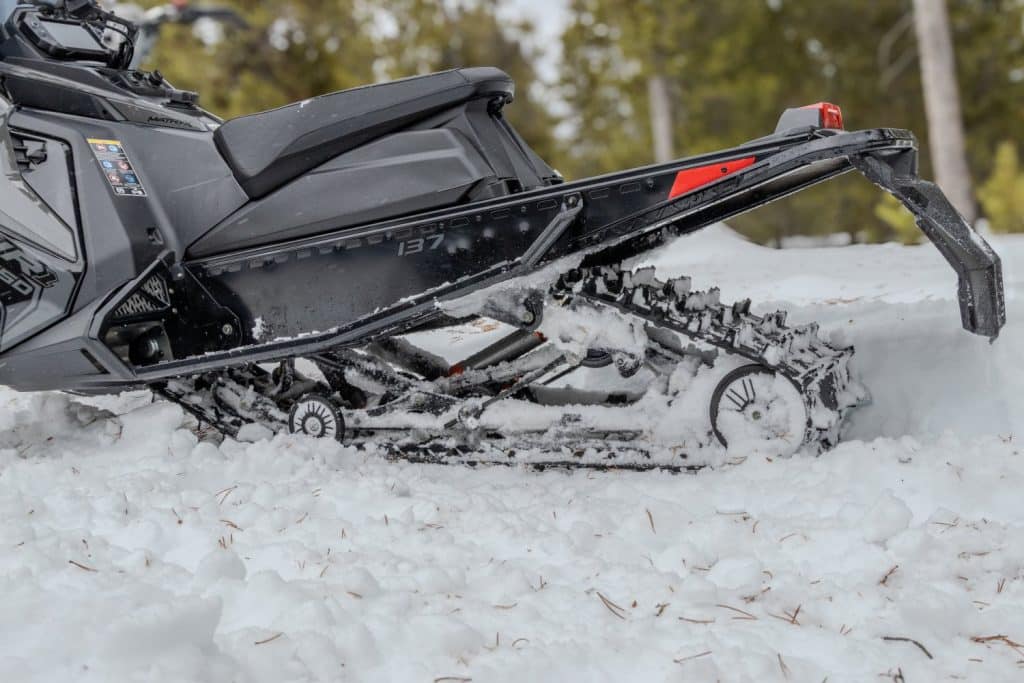
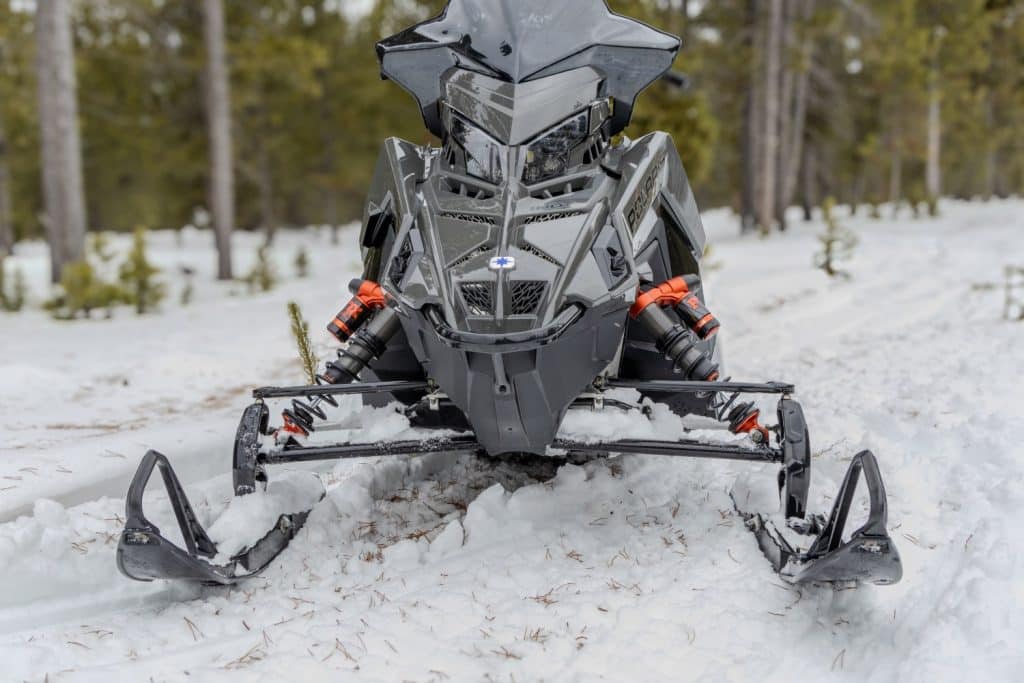
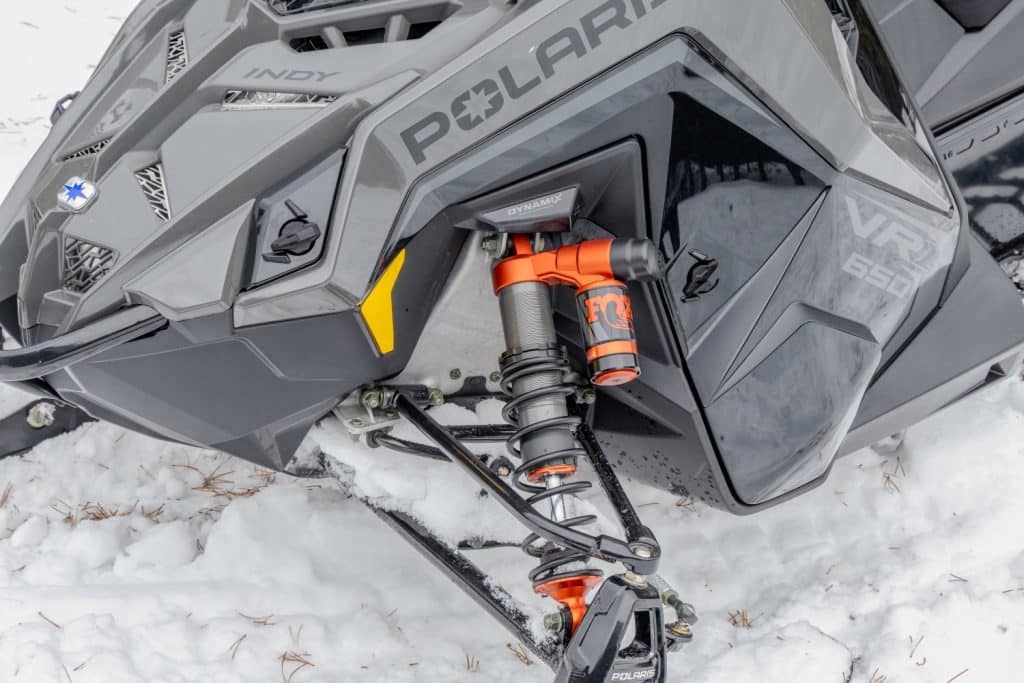
For off-road vehicles, this suspension marked a major turning point in the industry, in terms of comfort and performance. No need for adjustment, everything is done electronically, from the control screen located in the center of the console. This concept could easily be transposed to the snowmobile in terms of rider interaction. Basically, the engineers were using the same 7S screen, so all that was required was different programming and specific shock absorbers fitted with sensors to transmit the information to the control center. This screen is highly interactive, with a nice interface for the driver.
Interestingly, we’ve kept the same screen with the same user-friendly visual effect, where you can see the shock absorbers operating in real time.
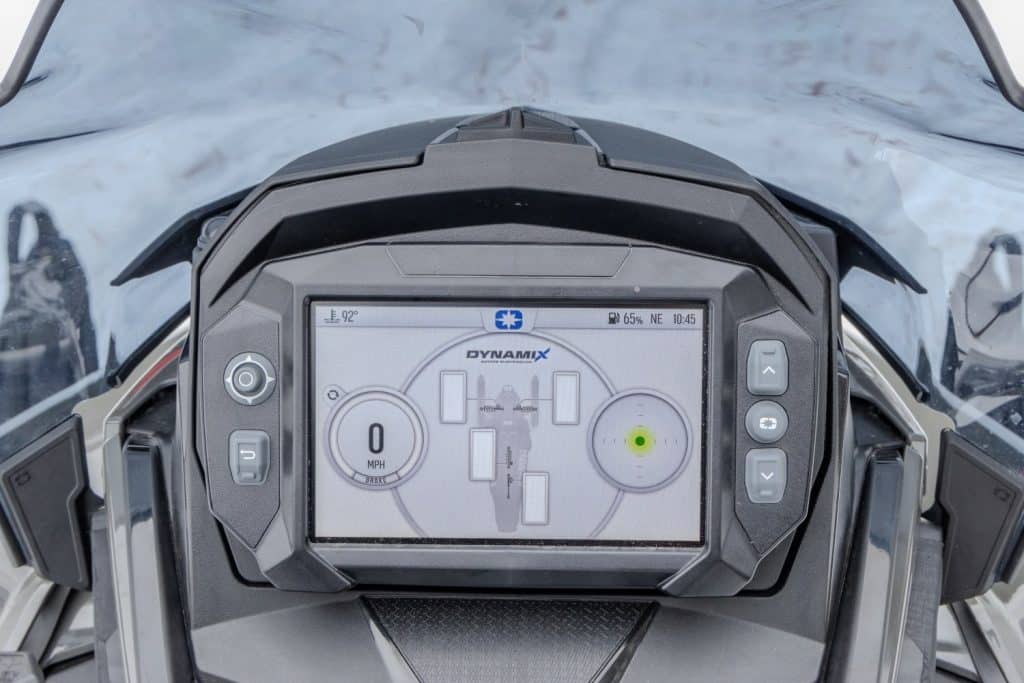
We’ve simply modified the display to reflect the four shock absorbers on the snowmobile’s side, giving you a live, instantaneous view of shock absorber operation. And it’s all continuous.
Although not new, the 7s display is unquestionably one of the best on the market. Whether for road vehicles or snowmobiles, it offers remarkable ease of use, with different displays to enhance your ride.
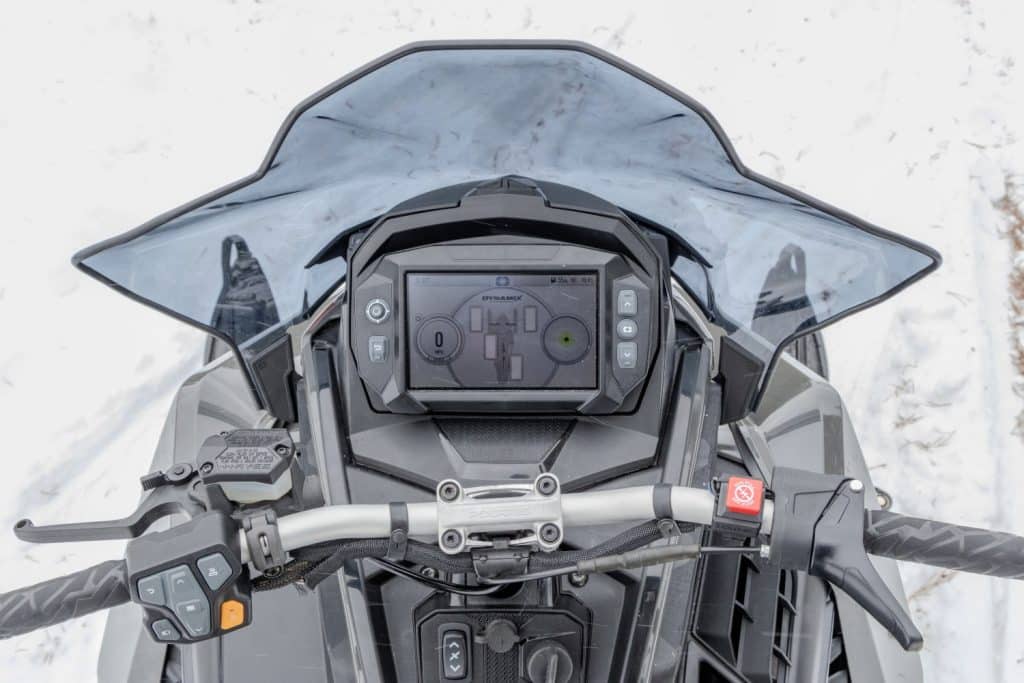
Is the 650 Patriot engine underrated?
The two-cylinder 650 engine is an excellent option for those seeking a balance between performance and fuel economy. With around 125 hp and variable exhaust valves, it offers more than acceptable performance at all engine speeds while maintaining very efficient fuel consumption. It could certainly be of interest to many performance- and fuel-efficiency-conscious users.
The 650 Patriot develops 10% more power and 14% more torque at mid-range, leading to better acceleration. One of the factors helping to achieve this result is the crankshaft, which is much lighter than previous 600 cm3 versions, enabling faster throttle response.
Optimized to run on 87 octane and up to 10% ethanol, with the option of also running on premium gasoline. Oil consumption is reduced by 10% compared to the 600 Liberty, and fuel consumption is cut by no less than 40%, a very important factor for trail riders. It’s a safe bet that you won’t be the first trail rider to look for a gas station. Please note that we don’t test fuel and oil consumption in our tests; these data come from the manufacturer.
On the trail!
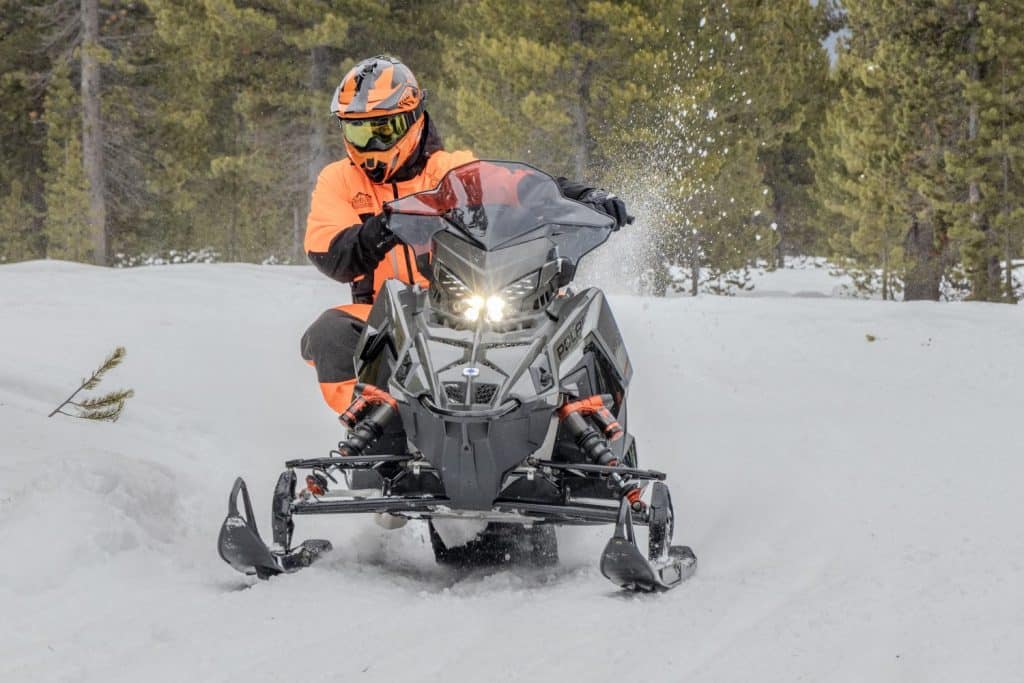
I’m sure everyone will be eager to hear my impressions of the new electronic suspension. My experience with this type of suspension dates back several years to BRP products, where a similar suspension was installed on the Mach Z in 2022. We must admit that our expectations were very high, given the excellent performance this suspension delivers in the off-road world.
We know of a place in West Yellowstone where we can test the suspensions to the max. After only a few meters, I already had a good idea of what was right with this suspension, and what needed to be improved, at least in my opinion.
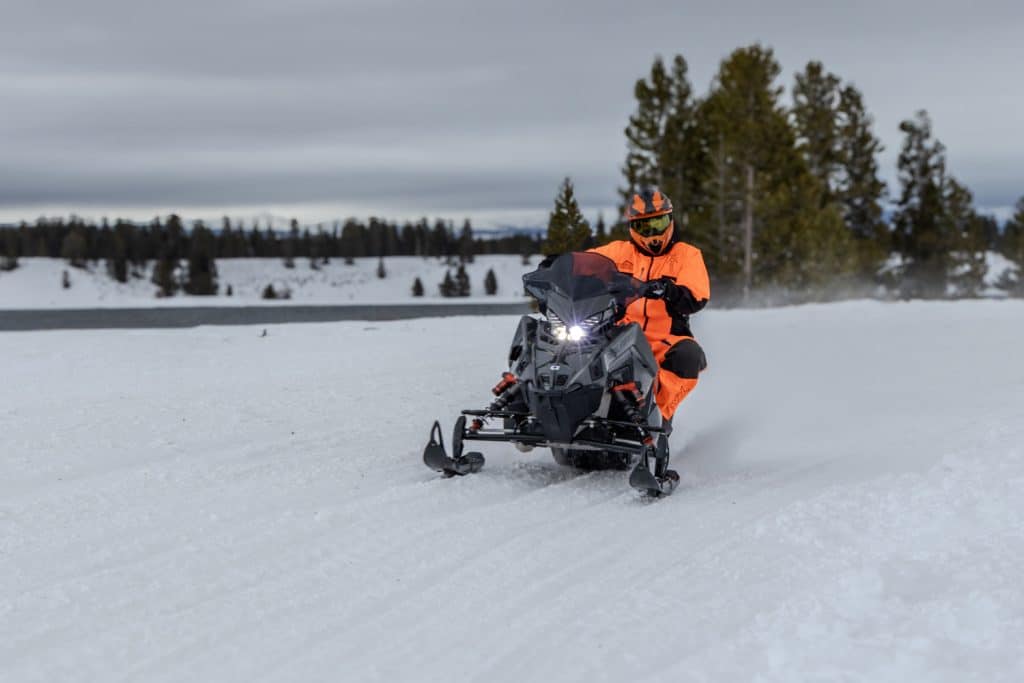
In ordinary trail conditions, the suspension gets the job done. The ability to keep the vehicle in line with the bend is spot on, and offers great stability. The increase in pressure to the external shock absorber during cornering is rapid and reacts well to the speed with which you attack the curves. Pressure is increased on the front shock absorber outside the bend, preventing the suspension from plunging, which also causes instability. This rapid reaction adds grip in bends where weight is at a premium.
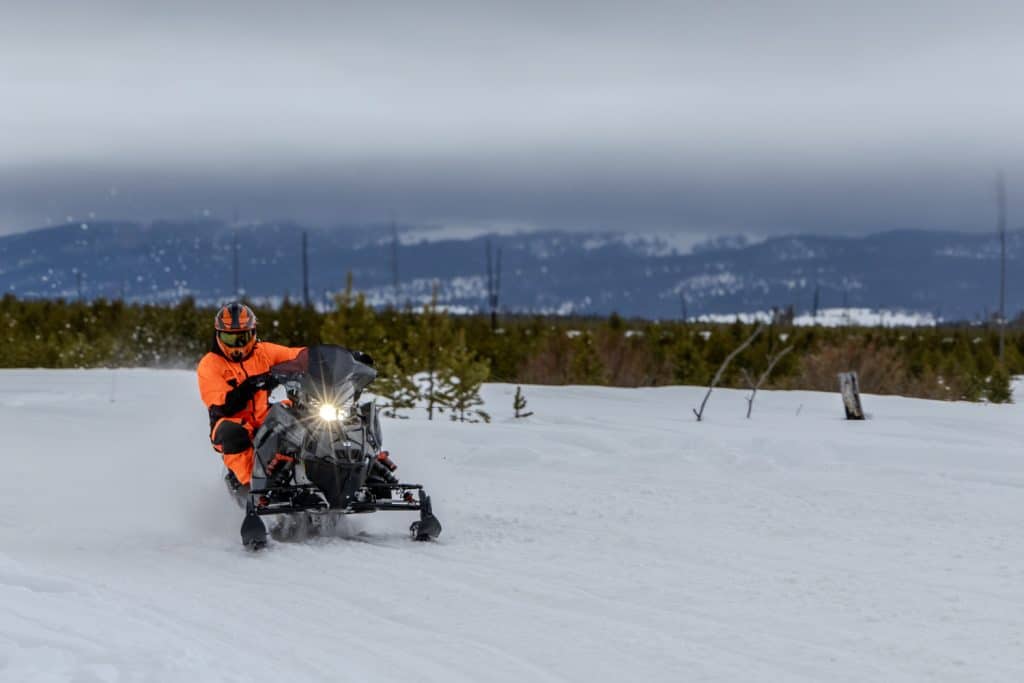
Weight transfer during acceleration is also well controlled. Although there was a slight stall in the front skis, this effect is easily corrected by adjusting the transfer blocks.
The limits of Dynamix
It seems that the electronic suspension can still be optimized to offer greater progressiveness when driving over larger bumps. Seeing the suspension bottoming out in such situations suggests that there may be further electronic adjustments needed to improve response in these conditions. While not all drivers may notice this effect, those exploring more challenging and bumpy terrain could benefit from a more progressive and adaptable suspension.
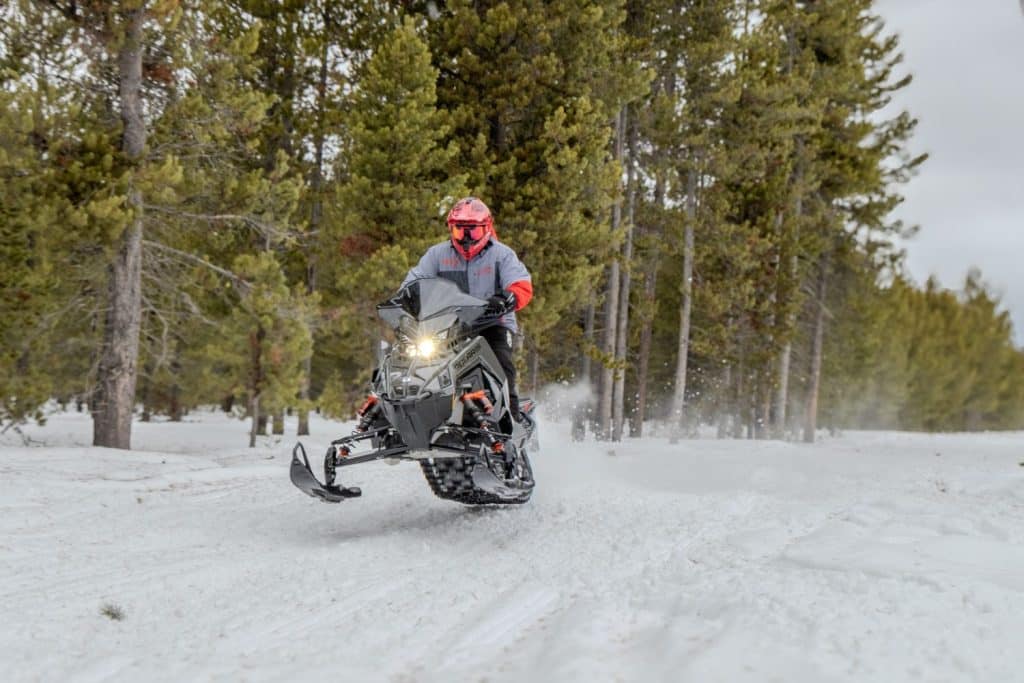
Despite the various modes available, the suspension doesn’t react quickly enough. This leads to what is commonly known as bottoming, i.e. reaching maximum travel, which is not ideal for your back. While the stiffest mode limits maximum access to suspension travel, it compromises comfort on more normal trail surfaces. It’s a delicate compromise between responsiveness and comfort that Polaris engineers will have to address for their future models. In my opinion, this is the kind of situation consumers want to avoid when paying more for this technology. At the moment, however, it’s not getting the job done. We’ve passed on our test results to the engineers, and they’ve taken note.
There’s no doubt that this system has a future in the near future. We need to improve the suspension’s response so that it reacts more quickly and offers greater comfort in areas where the terrain can surprise the driver. This will be a major addition to the continuity and success of this suspension.
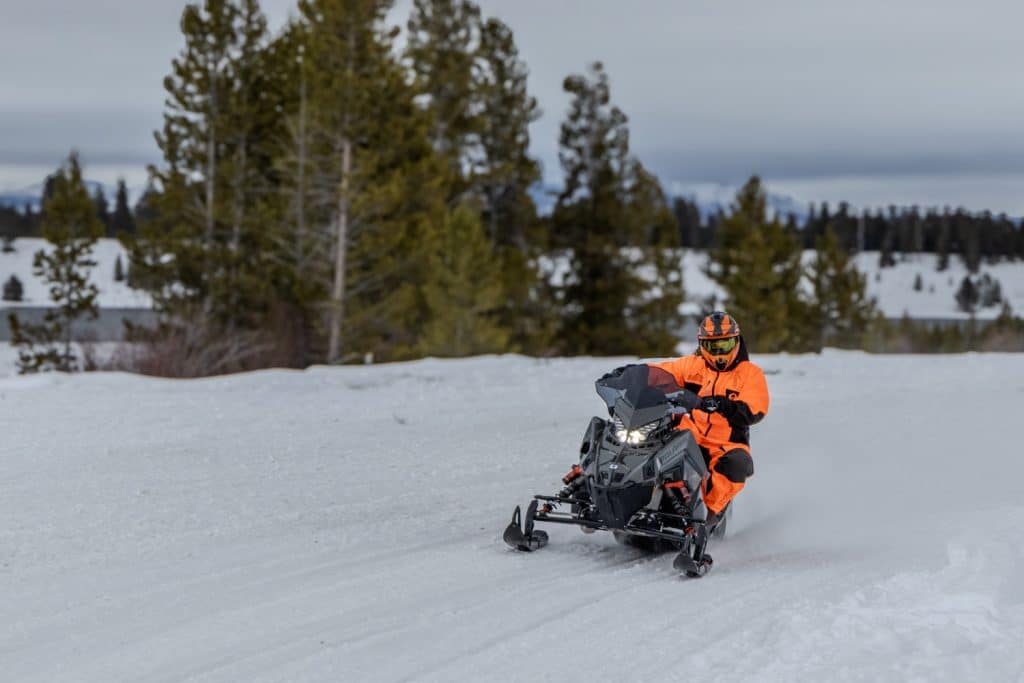
In conclusion, the 650 Patriot is undeniably an enlightened choice, offering an excellent power-to-weight ratio. Many big-bore enthusiasts would do well to give this sled a try!

